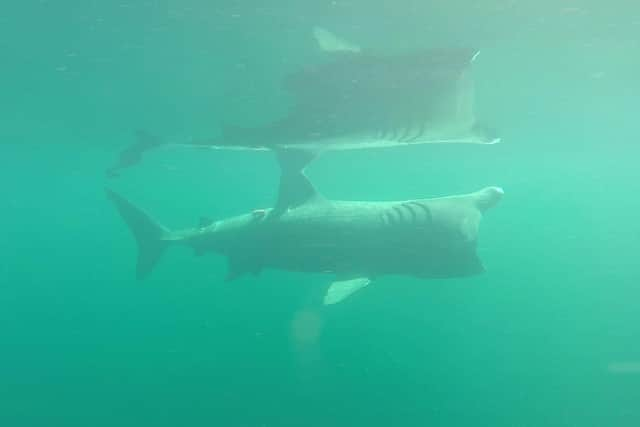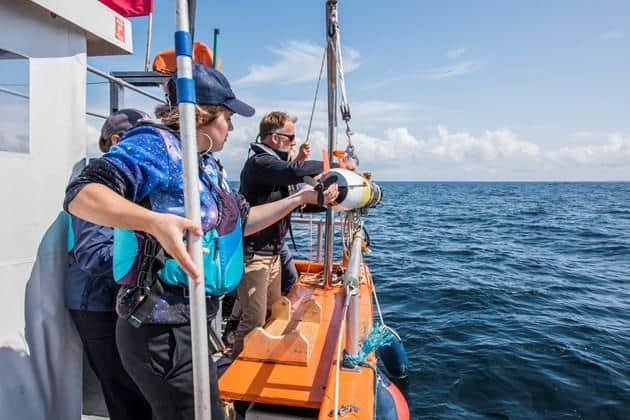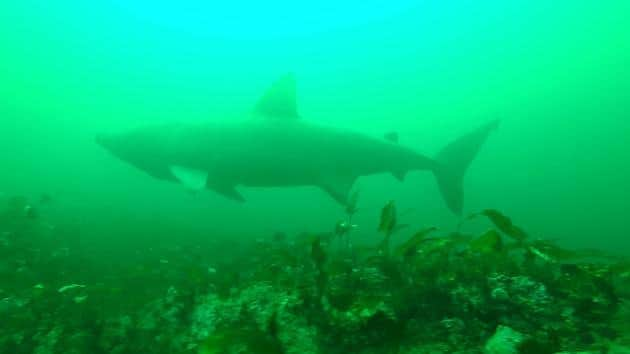Underwater SharkCam reveals secret life of Scotland's basking sharks
The findings come from a pioneering study that used a robot SharkCam to observe and gather video footage of basking sharks moving around the Inner Hebrides last summer.
It is the first time the creatures have been tracked via an autonomous vehicle, and has shed new light on the secret lives of these harmless relatives of the fierce great white.
Advertisement
Hide AdAdvertisement
Hide AdLarge numbers of the world’s second-biggest fish travel to Scottish waters between April and October each year.


They can often be sighted off the west coast, cruising about near the surface with their huge mouths open, sifting for food.
But little is known about the underwater activities of the globally endangered species, despite their prevalence here.
It has long been thought they migrate to Scotland purely for the rich pickings of their food, zooplankton.
But these latest findings add weight to theories that the giant fish come to breed, rather than just for good eating.


The SharkCam followed three basking sharks in the waters around the islands of Coll and Tiree, filming their actions from a distance as they swam below the surface.
Close scrutiny of the footage revealed the sharks spending a considerable amount of time swimming near the seabed – a behaviour not often reported for the species.
Notably the individuals were not seen to be feeding, leading researchers to conclude the big fish could be here to breed rather than just fill up.
Advertisement
Hide AdAdvertisement
Hide AdThe project was funded by: conservation groups WWF and Sky Ocean Rescue; NatureScot, the national agency formerly called Scottish Natural Heritage; Woods Hole Oceanographic Institution, which owns and operates the Remus SharkCam; and the University of Exeter.


Dr Suzanne Henderson, marine ecosystems manager for NatureScot, said: “While we weren’t lucky enough to capture courtship or mating behaviour on camera this time, this innovative study has shed more light on the lives of these spectacular giant fish.
“The fact that the sharks spent much more time swimming just above the seabed than we previously thought, and with their mouths closed, is really interesting – particularly as the species is often seen as a pelagic or near-surface filter-feeding shark.
“It suggests we may have to rethink not only how many basking sharks are in Scottish waters, but why they are here, as it’s likely not only the plankton they come for.”
Dr Lucy Hawkes, senior lecturer in physiological ecology at the University of Exeter and National Geographic Explorer, said: “This project gave us a unique opportunity to deploy some of the most advanced animal-tracking technology on the planet on these amazing sharks.
“The footage was quite astonishing and really made us look at the work we have been doing in the Sea of the Hebrides in a new light.
“We hope to continue to search for evidence that this may be the elusive breeding spot for the basking shark.”
Dr Henderson added: “The insights the technology has provided about the habitats the sharks use are also invaluable, and will help inform how we protect and conserve the species in future.”
A message from the Editor:
Thank you for reading this story on our website. While I have your attention, I also have an important request to make of you.
The dramatic events of 2020 are having a major impact on many of our advertisers - and consequently the revenue we receive. We are now more reliant than ever on you taking out a digital subscription to support our journalism.
Subscribe to scotsman.com and enjoy unlimited access to Scottish news and information online and on our app. Visit https://www.scotsman.com/subscriptions now to sign up.
By supporting us, we are able to support you in providing trusted, fact-checked content for this website.
Joy Yates
Editorial Director
Comments
Want to join the conversation? Please or to comment on this article.